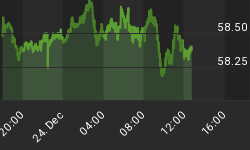The dollar diversification story returns to haunt the US currency as the United Arab Emirates central bank reasserts its plans to increase its holdings in euro reserves by 10%, as well as raising its share in sterling and yen reserves. Although the central bank made similar comments in more than two occasions so far this year, today's comments stand out as they include remarks that dollar reserves could be reduced to as low as 50% of the total $25 bln currently held. The UAE central bank noted that its currency reserves were 98% USD and 2% in EUR.
The importance of these today's comments is underlined by the fact that that they take place two days after the Swiss National Bank revealed that it has added yen to it $36 bln in FX reserves and trimmed the share of US dollars while raising allocation to other currencies. Recall that 2 weeks ago Russia 's central announced that it had started buying yen for its reserves.
With the Federal Reserve expected to have concluded its interest rate hike campaign and US growth slowing to its lowest levels in 3 years, world central banks are fulfilling their profit-maximizing functions by attempting to sell portion of their USD reserves at a relatively high level in the USD, while adding their reserves shares in assets they expect to gain in the medium to long term such as the yen, euro, sterling and gold.
The "playing-the-market-role" of global central banks is highlighted by UAE central bank governor Al Suwaidi in July when he said:" We are in general investing in short-term debt instruments in the US because we expect US interest rates to go further" adding "When there is a clear trend going up, you move into it. If it is going down, you wait for the bottom and buy". Those comments were made last summer when the Fed was expected to raise rates and the US currency stood at a healthier footing. With these conditions reversing, and with gold prices regaining past the $600 standing at a 4-week high, global central banks will find these trends to be the vital catalysts for diversification.
Markets await US data and Lacker speech
Markets shift attention to a speech by Richmond Fed president Jeffrey Lacker and the September figures on US personal income/spending as well as the all important core PCE price index - the Fed's preferred measure of inflation. Mr. Lacker was the sole dissenter in each of the last three FOMC policy decisions, voting for an interest rate hike. Markets will scrutinize whether Mr. Lacker has tempered his inflation worries and reduced his hawkishness after the Q3 GDP report showed a sharp slowdown in growth to 1.6% and a moderation in price pressures.
The core PCE price index is expected to have risen 0.2% m/m in September and 2.4% y/y from August's 0.2% and 2.4%. Personal income is expected up 0.3%, matching August's figure, while consumption is seen up 0.2% from 0.1%.
Yen broadens rally
Friday's announcement by the Swiss National Bank boosting its yen to 4.9% of its $36 billion reserves from 3.0% last quarter continues to lift the Japanese currency across the board. News paper reports that the Bank of Japan will upgrade its growth assessment in this week's semi annual report have also boosted the currency, on speculation that a BoJ rate hike may still not be ruled out this year. While we do not think that rate hike will take part this year, we expect the central bank to lay out the foundation for a rate hike in Q1 2007 by improving its growth assessment and maintaining that deflationary pressures will continue to ease.
The yen's strength is especially highlighted by the fact that it is dragging the Aussie to 1-week low at a time when the Australian central bank is expected to lift rates to 6.25%, 6 times greater than those in Japan.
USDJPY eyes the 116.80 support, followed by 50% retracement at 116.80. Major support stands at 3-month trend line of 116. Upside stands at 117.50, followed by 117.80.
Euro awaits US PCE, Lacker
Euro's enters its 5 th daily rise - pattern not seen since May - boosted by the USD side of the equation. Euro watchers will be fixated on the US PCE data and Lacker speech. Given the euro's positive bias, a core PCE figure of at least 0.2% m/m will maintain the euro's bullish run and tackle the 61.8% retracement level at 1.2760 to target the 1.2770 figure. We expect Mr. Lacker to continue sounding off the need to contain inflation, but the key question is whether he will acknowledge the recent evidence of energy prices and their impact on the Fed's outlook. Recall that the FOMC statement removed energy prices as the factor behind inflationary pressures, remaining with capacity utilization. With the central bank diversification story looming, expect the dollar to continue selling in the event that Mr. Lacker does acknowledge signs of a slowdown or cooling in price pressures.
Trend line resistance at 1.2755 and 61.8% retracement at 1.2770 will act as the key barriers to break, but could be surmountable in the event of a downside and dovish surprise in PCE and Lacker speech. Euro support starts at 1.27 and 1.2670.
















